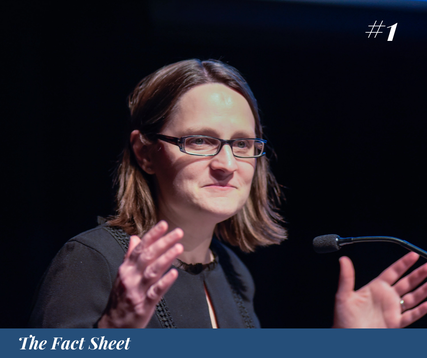|
Welcome to the first-ever edition of The Fact Sheet! I'll be regularly posting these one-of-a-kind conversations with innovators who've committed their lives to making a social impact. Expect to see more of these here at Turnstone throughout 2019.
Jessica Droste Yagan serves as the CEO of Impact Engine, an investment firm with a mission to bring more capital to a market where financial returns are linked to positive social and environmental impacts. Jessica has co-authored two Harvard University case studies on public-private partnerships and currently serves as a board member for nonprofits Metropolitan Planning Council, OneGoal Chicago, The Honeycomb Project, and the Rustandy Center for Social Sector Innovation at Chicago Booth, and for-profit impact company Fixer. And now...just the facts! BOB DOLGAN: One of my realizations in my MBA program was that there are a lot of different ways to make a social impact beyond traditional nonprofits. What’s led to the choices you’ve made about your impact approach? JESSICA DROSTE YAGAN: I was originally focused on public policy. In college, I thought the only way to make an impact was through government or nonprofits and that business was working against impact. I realized in college that capitalism can and does create positive social good. And that we can be intentional about that. I got really focused on making the intersection between capitalism and social good stronger and more apparent. I also didn’t believe solving big issues such as climate change and income inequality could be done with government and nonprofits alone. It is possible to both care about the planet and people and make money. It can be about both. I thought what if you optimize that from the beginning. That leads to different decisions when you think that way. BD: So that must have been on your mind when you went to grad school and later at McDonald’s (leading the creation of global and U.S. sustainable sourcing strategies). JDY: I thought if you could align profit and social good in a big, public corporation, you could do it anywhere. I ended up at McDonald’s and saw that there could be a lot of win-wins in its supply chain. They had been reactive to every campaign; I thought they could be proactive and build a sustainable sourcing strategy. BD: That makes a lot of sense. If McDonald’s makes one change to its supply chain strategy, like switching to cage-free eggs recently, that may have as big or bigger impact than what a nonprofit could do. JDY: You need all the players. Nonprofits play a big role. At McDonald’s, we partnered with nonprofits because they have unique expertise. It’s frustrating that activists never compromise, but you realize that the things you’re trying to do need the activists to be unhappy. They helped move the needle too. There’s an important distinction between [making an impact on] the environment and on people, when you think about scale. With the environment, bigger is better--save more forests, save more energy, etc. With humans it’s not so straightforward. Touching more people’s lives doesn’t mean you necessarily had the biggest impact. I might touch 100,000 farmers through technical assistance, but a friend who works in social work might truly and deeply change the trajectory of 10 lives. It’s hard to compare the two. BD: What is it that Impact Engine looks for when it makes investments? JDY: I joined Impact Engine in 2014 because it was authentic and thoughtful about making money and doing good. In our Venture Capital fund, we’re looking for software companies that are capital efficient, making a social impact and that have a huge market size. Our priorities are education, health, economic empowerment, and environmental sustainability. We’re looking for a direct line to impact rather than companies that are giving back to charity. BD: Impact Engine made the choice not to invest in “Buy One, Give One” models like those of Toms Shoes and others. That’s a pretty popular concept in the social impact world. Why not do that? JDY: We don’t want to invest in companies where the impact is disconnected from the profit driver. That can create tension, whereas we’re looking for one to reinforce the other in a virtuous cycle. Also, personally, I’m weary of giving things away that may displace a local industry. BD: You’re on four nonprofit boards. What do the organizations have in common? JDY: I tend to focus my time on initiatives that I think create leverage--changing systems or thinking in a way that can multiply time and dollars. ###
1 Comment
3/22/2019 07:14:36 am
For the past 43 years I have worked in "traditional fundraising". I have invited corporations and foundations to invest in the charities I have served. I do understand how working in supply chain management for a large corporation can be a support to environmental issues. While working for a large corporation is certainly one way to support good causes, but there are those of us who have worked close to the front lines to support those who feed the hungry, advocate for the homeless, care for children, work in schools and social service agencies. We are one step away from direct service but I have always felt a deep partnership with them. The wisdom of Solomon suggests we are all in this together be it in a corporate office or soup kitchen. It also suggests that we always keep in mind the poor, homeless, children, and the marginalized.
Reply
Leave a Reply. |
The only social impact Q&A on the web
AboutThe idea behind The Fact Sheet is to document interesting conversations with super-interesting people. Archives
December 2019
Categories |


 RSS Feed
RSS Feed